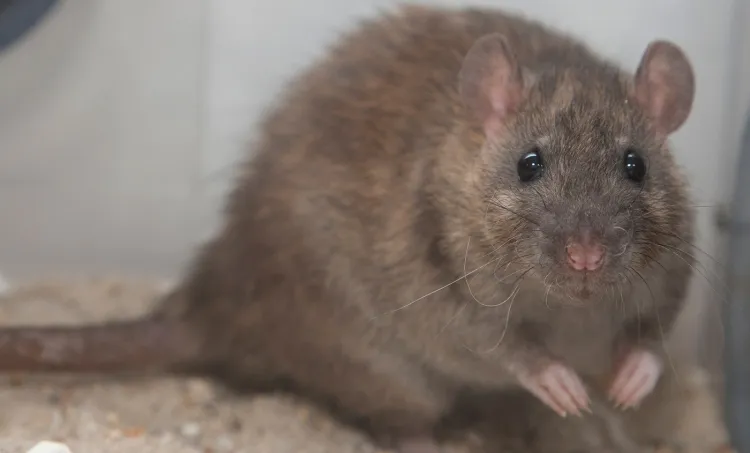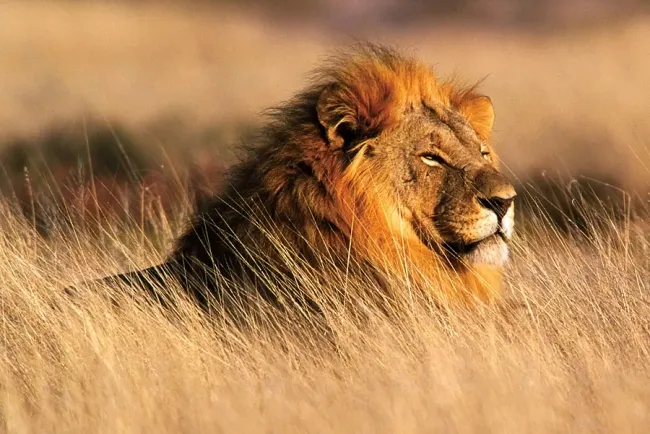Rats: Intelligent and Adaptable Rodents...!!!
Rats, scientifically known as Rattus, are small, omnivorous rodents that belong to the Muridae family. They are found worldwide and have adapted to a wide range of environments, from urban areas to forests and agricultural lands. Known for their intelligence, adaptability, and prolific breeding, rats are often considered pests, but they also play important roles in ecosystems and have been used in scientific research for many years.

Physical Characteristics
Rats have several physical traits that set them apart from other rodents. They typically have a slender body, a pointed snout, and a long, hairless tail. Their fur can range in color from brown to black to white, depending on the species. The average size of a rat ranges from 6 to 12 inches in length, not including the tail, which can be almost as long as their body.
-
Eyes and Ears: Rats have relatively small eyes and ears, but they are highly sensitive. They have poor vision, especially in bright light, but their sense of hearing is acute. They can detect ultrasonic sounds and use their ears to navigate their environment.
-
Whiskers: Rats have long whiskers, or vibrissae, that are highly sensitive to touch. These whiskers help them navigate through tight spaces and detect changes in their surroundings.
-
Teeth: Rats are known for their continuously growing incisors, which they must gnaw on various objects to keep trimmed. This gnawing behavior is one reason why rats are often considered pests, as they can cause damage to property.
Behavior and Social Structure
Rats are highly social animals that live in colonies. They have complex social structures and communicate with each other through vocalizations, body language, and scent markings.
-
Social Hierarchy: Within a rat colony, there is a defined social hierarchy. Dominant rats have access to the best food and nesting sites, while subordinate rats must wait their turn. This hierarchy is established through social interactions and can change over time.
-
Communication: Rats use a variety of vocalizations to communicate with each other, including squeaks, chirps, and ultrasonic calls. They also use body language, such as grooming and play-fighting, to reinforce social bonds and establish dominance.
-
Scent Markings: Rats have scent glands that they use to mark their territory. By rubbing their bodies against objects or urinating, they leave scent trails that help them navigate and communicate with other rats.
Diet and Foraging
Rats are omnivorous and have a highly varied diet. They will eat almost anything available, from seeds and fruits to insects and small animals. Their ability to adapt to different food sources is one reason why they are so successful in diverse environments.
-
Foraging Behavior: Rats are opportunistic feeders and will explore their environment in search of food. They have an excellent sense of smell, which they use to locate food sources. When food is scarce, rats can travel significant distances to find sustenance.
-
Food Hoarding: Some species of rats, such as the Norway rat, are known to hoard food. They will gather and store food in their burrows or other hiding places to ensure they have a supply during lean times.

Reproduction and Lifespan
Rats are prolific breeders, with females capable of producing several litters per year. Each litter can consist of 6 to 12 pups, and the young are born blind and hairless. They grow quickly and are weaned within a few weeks. Rats reach sexual maturity at around 5 to 6 weeks of age.
-
Reproductive Behavior: Female rats are capable of becoming pregnant immediately after giving birth, allowing them to produce multiple litters in quick succession. This rapid reproduction contributes to their ability to quickly colonize new areas.
-
Lifespan: In the wild, rats typically live for about one to two years. However, in captivity, they can live up to three years or more with proper care.
Roles in Ecosystems
Despite their reputation as pests, rats play important roles in ecosystems. They are prey for many predators, including birds of prey, snakes, and larger mammals. Their foraging behavior helps to disperse seeds and promote plant growth. Additionally, rats contribute to the decomposition process by scavenging on dead animals and plant matter.
Rats and Human Society
Rats have a complex relationship with humans. On one hand, they are considered pests because they can cause damage to crops, property, and food supplies. They are also vectors for various diseases, such as leptospirosis, hantavirus, and the plague.
On the other hand, rats have been invaluable in scientific research. The laboratory rat, a domesticated form of the Norway rat (Rattus norvegicus), has been used in medical and psychological studies for over a century. Their genetic similarity to humans makes them ideal subjects for studying human diseases and testing new treatments.
Conservation and Management
While some rat species are widespread and thriving, others are threatened by habitat loss and introduced predators. Conservation efforts focus on protecting native rat species and managing invasive populations.
In urban areas, integrated pest management strategies are employed to control rat populations. These strategies include sanitation, exclusion, and the use of traps and rodenticides. Public education campaigns also play a crucial role in reducing the availability of food and shelter for rats.
Rats are remarkable animals with complex behaviors and adaptations that have allowed them to thrive in a wide range of environments. While they are often viewed as pests, they also play important roles in ecosystems and contribute to scientific research. Understanding and managing their populations is essential to mitigating their negative impacts while recognizing their ecological significance.
What's Your Reaction?

















